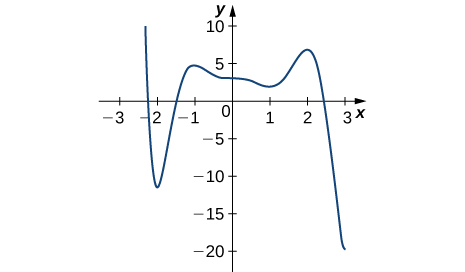| << Chapter < Page | Chapter >> Page > |
Find the absolute maximum and absolute minimum of over the interval
The absolute maximum is and it occurs at The absolute minimum is and it occurs at
At this point, we know how to locate absolute extrema for continuous functions over closed intervals. We have also defined local extrema and determined that if a function has a local extremum at a point then must be a critical point of However, being a critical point is not a sufficient condition for to have a local extremum at Later in this chapter, we show how to determine whether a function actually has a local extremum at a critical point. First, however, we need to introduce the Mean Value Theorem, which will help as we analyze the behavior of the graph of a function.
In precalculus, you learned a formula for the position of the maximum or minimum of a quadratic equation which was Prove this formula using calculus.
If you are finding an absolute minimum over an interval why do you need to check the endpoints? Draw a graph that supports your hypothesis.
Answers may vary
If you are examining a function over an interval for and finite, is it possible not to have an absolute maximum or absolute minimum?
When you are checking for critical points, explain why you also need to determine points where is undefined. Draw a graph to support your explanation.
Answers will vary
Can you have a finite absolute maximum for over Explain why or why not using graphical arguments.
Can you have a finite absolute maximum for over assuming a is non-zero? Explain why or why not using graphical arguments.
No; answers will vary
Let be the number of local minima and be the number of local maxima. Can you create a function where Draw a graph to support your explanation.
Is it possible to have more than one absolute maximum? Use a graphical argument to prove your hypothesis.
Since the absolute maximum is the function (output) value rather than the x value, the answer is no; answers will vary
Is it possible to have no absolute minimum or maximum for a function? If so, construct such a function. If not, explain why this is not possible.
[T] Graph the function For which values of on any infinite domain, will you have an absolute minimum and absolute maximum?
When
For the following exercises, determine where the local and absolute maxima and minima occur on the graph given. Assume domains are closed intervals unless otherwise specified.

Absolute minimum at 3; Absolute maximum at −2.2; local minima at −2, 1; local maxima at −1, 2

Notification Switch
Would you like to follow the 'Calculus volume 1' conversation and receive update notifications?